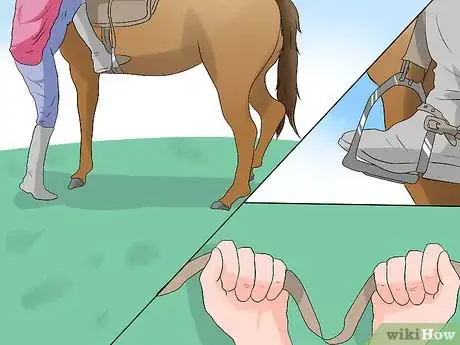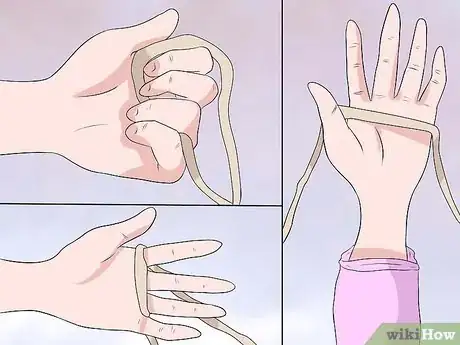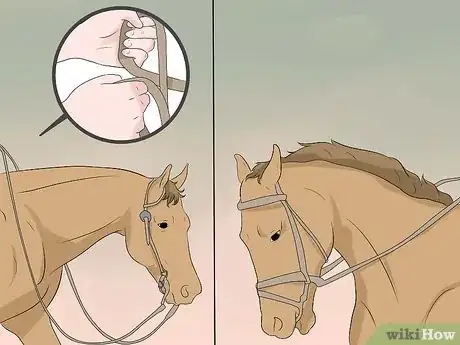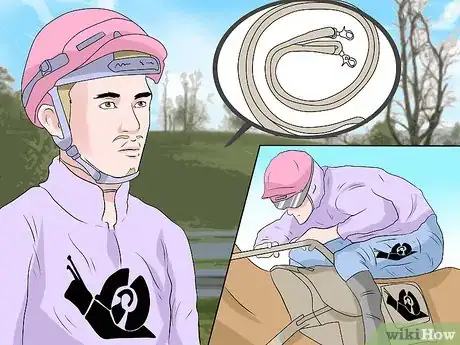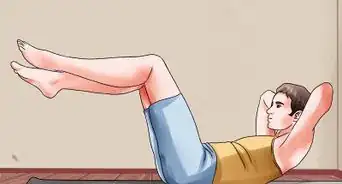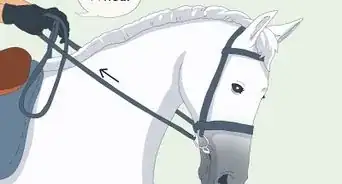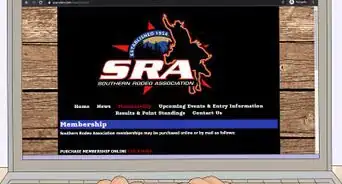wikiHow is a “wiki,” similar to Wikipedia, which means that many of our articles are co-written by multiple authors. To create this article, 17 people, some anonymous, worked to edit and improve it over time.
This article has been viewed 108,738 times.
Learn more...
When it comes to horseback riding, your reins are one of the main ways you stay connected with your horse. Focusing on your rein hold will help you control the horse without causing it pain. Over time, each rider will develop a 'feel' for the bridle and understand how best to use the reins to communicate with the horse. We're here to help you get started, so you can feel comfortable and confident the next time you climb into the saddle.
Things You Should Know
- Grip loop reins with both hands, using both hands to grip the opposite sides of the reins. If you're using split reins, hold a rein in each hand.
- Wrap each rein around the first three fingers of each hand. Then, grip the reins in a fist, like you're holding an ice cream cone.
- Space your hands about 10 to 15 cm (3.9 to 5.9 in) apart, making sure that they aren't spaced wider than the horse's neck.
- Hold the reins tightly enough to control the horse, but not so tight that you're causing unnecessary restriction.
Steps
Holding the Reins
-
1Mount your horse. When mounting, you will often mount on the left side, because of the fact that most horses are used to being approached on this side. Pick up the reins with your left hand, put your left foot in the stirrup closest to you and then push yourself over the saddle (while still holding the reins). After mounting, your feet should already be in the stirrups.
-
2Check the type of reins. In Western riding, riders usually use split reins,[1] with one for each hand or they hold them with one hand. But in English riding, the reins are typically connected, forming a loop. The instructions below apply to both types except where noted.
- Loop reins are the most common reins, except in Western riding, and are also used in dressage, jumping, polo, and horse racing.
Advertisement -
3Hold opposite sides of the reins. Start by holding one rein in each hand, or opposite sides of a loop rein. When you are a more experienced rider, you may learn to hold both split reins in one hand. For now, using both hands will give you more control over the horse.
- Loop reins are always held with both hands, regardless of experience.
-
4Wrap the rein around your first three fingers. Hold your palm flat. Loop the rein around your pointer, middle, and ring fingers. It should not wrap around your thumb or pinky.
- Repeat this for your other hand as well.
-
5Close your hands in a loose fist. Hold the reins loosely, as though you were holding an ice cream cone. Turn your hands so your thumbs point up and slightly toward each other.[2]
-
6Position your hands. Your hands should be approximately 10–15 centimeter (3.9–5.9 in) apart, and never further apart than the width of your horse's neck. Your hands have to be above your horses withers. Keep your hands relaxed and a little above the saddle, in front of the saddle pad. Your elbows have to be in an angle around 90°.
-
7Hold the reins at the right tension. You want just enough tension to maintain control, without restricting the horse's movements unnecessarily. It's better to hold them too loose than too tight, in order to avoid causing pain.[3] Beginners should always use reins attached to a gentle bit, such as a snaffle bit with D rings. Horses with a harsher bit or sensitive muzzles may react with surprise and pain if the reins are tugged too hard.
Advanced Uses
-
1Train your horse to obey ground-tying. A cowboy's horse is often trained to stand still when the cowboy dismounts and puts one of the reins on the ground. This is called being "ground-tied."
-
2Adapt your style for ranch work. Experienced cowboys develop their own rapport with their horse, and may alter the reins or other elements of the tack. Generally, a cowboy performing ranch work will hold the reins in the left hand and allow them to hang somewhat loosely. This leaves the right hand free for roping cows or other work performed from horseback.
-
3Use reins in horse racing. Jockeys use the long, looped rein typical in English riding, with rubber grips for increased hold. In a horse race, the jockey pulls low and tight, so that the horse tucks his chin to his chest, in order to collect the horses gait and slow its gallop. This gives both horse and rider balance and allows the jockey a bit of leverage and control.
Community Q&A
-
QuestionHow do I hold my pony's reins when riding with a double-bridle or a Pelham bit? With the 2 reins?
 Community AnswerThe correct way to hold your horse's reins is to imagine giving someone a thumbs-up. Instead of wrapping the reins around three of your fingers, wrap the reins around four fingers, not including the thumb. There should be a loop; now imagine the loop of the reins as part of your thumb and you're giving a thumbs-up.
Community AnswerThe correct way to hold your horse's reins is to imagine giving someone a thumbs-up. Instead of wrapping the reins around three of your fingers, wrap the reins around four fingers, not including the thumb. There should be a loop; now imagine the loop of the reins as part of your thumb and you're giving a thumbs-up. -
QuestionDo you hold the reins like the way shown with all different types of bridles/reins or different way of riding, or is there more than one way?
 EquestriangooseTop AnswererIt will depend on what discipline you do. English riders use the two-handed thumb-on-top method, and western riders have a variety of reins, all held differently.
EquestriangooseTop AnswererIt will depend on what discipline you do. English riders use the two-handed thumb-on-top method, and western riders have a variety of reins, all held differently. -
QuestionCan I hold it with one hand?
 AmieCommunity AnswerYes, that's called neck-reining. Just gather the reins in one hand at the horse's neck, and pull the reins in the direction you want to turn, kicking with the opposite leg. Pull back to stop. The motions remain the same, only with one hand.
AmieCommunity AnswerYes, that's called neck-reining. Just gather the reins in one hand at the horse's neck, and pull the reins in the direction you want to turn, kicking with the opposite leg. Pull back to stop. The motions remain the same, only with one hand.
References
About This Article
To properly hold a horse’s reins, hold them in your left hand as you mount the horse. Once you’re seated in the saddle, hold one side of the reins in each hand. For a secure hold, wrap the rein around your first 3 fingers, but don’t loop it around your thumb or pinky finger. Then, close your hand in a loose fist, with your thumbs pointed up and slightly toward each other. Hold your hands about 10-15 cm apart, and never hold them wider than the width of your horse’s neck. Also, don’t pull too hard on the reins, as this can be painful for the horse. Read on to learn how to hold the reins if you’re racing a horse!
